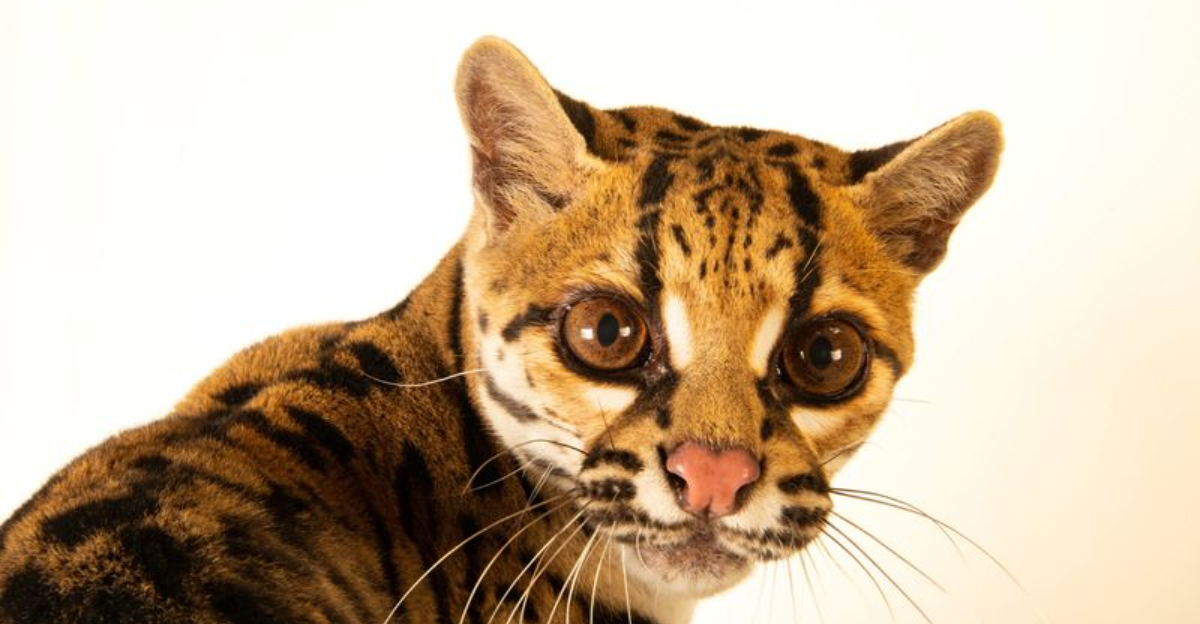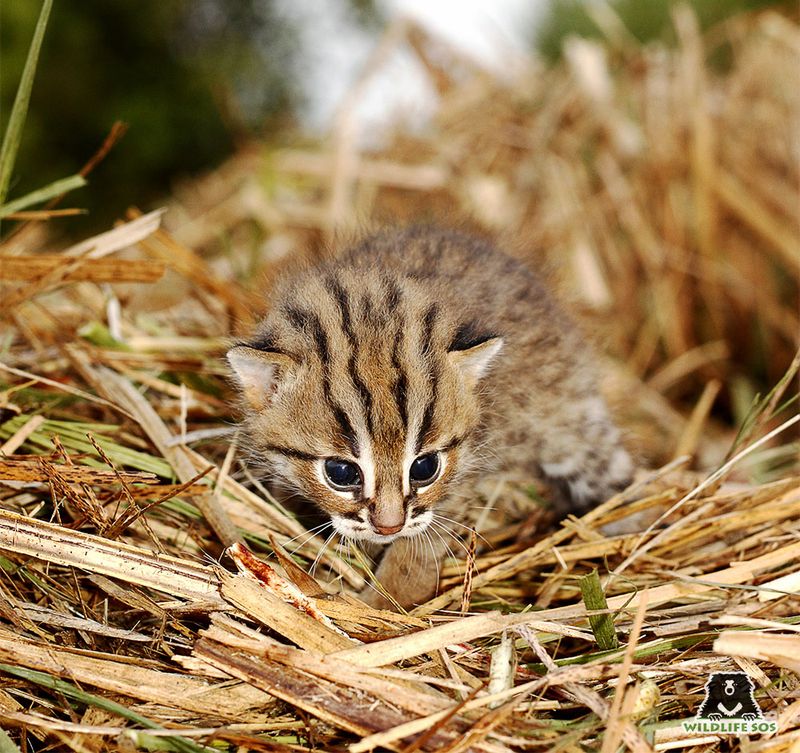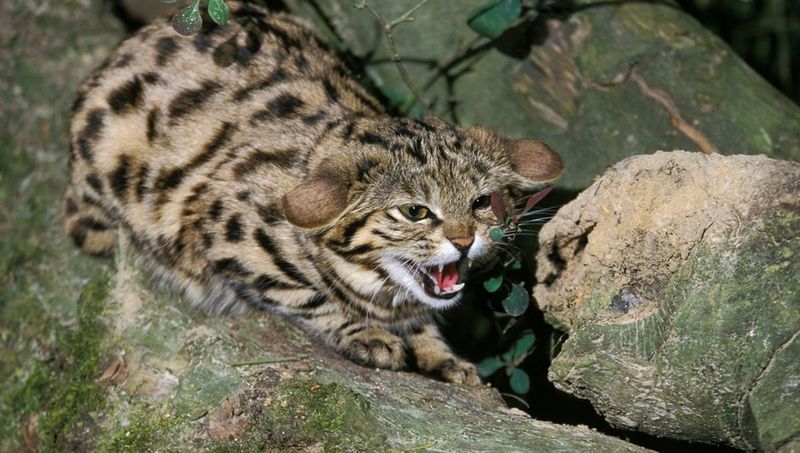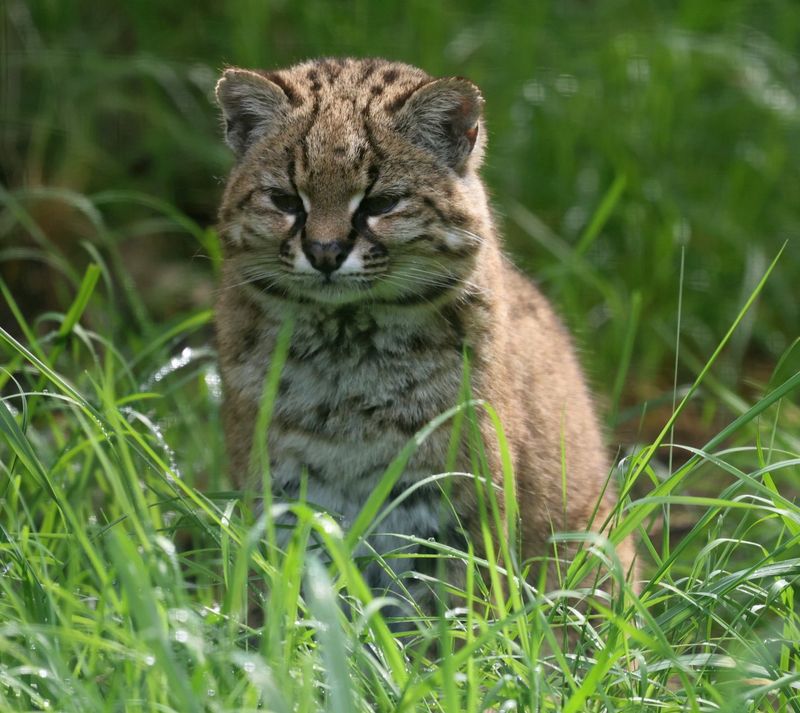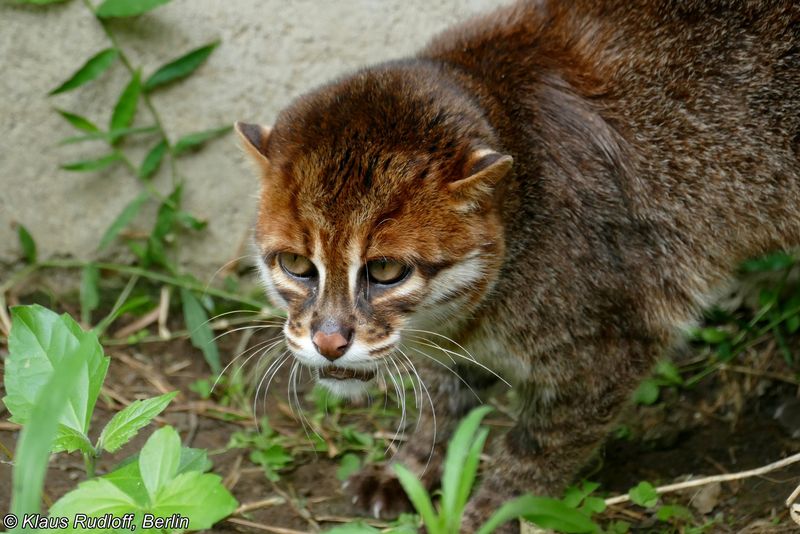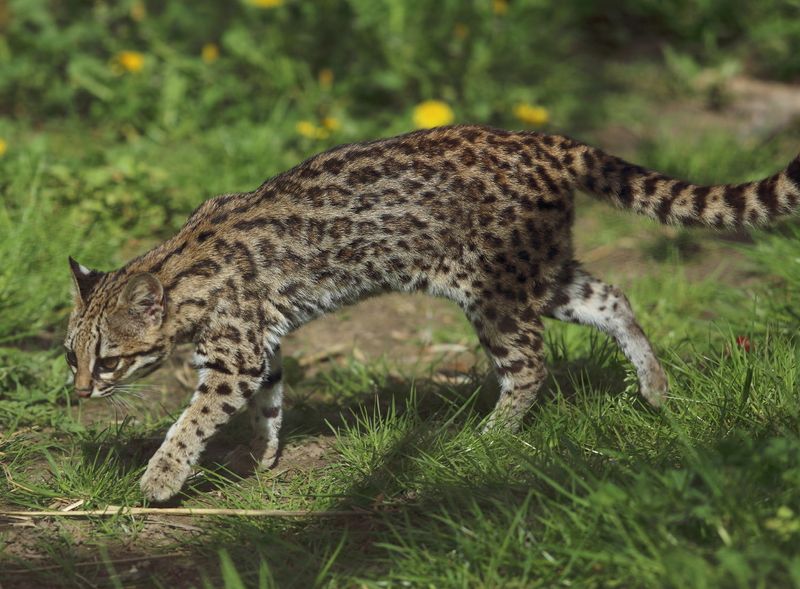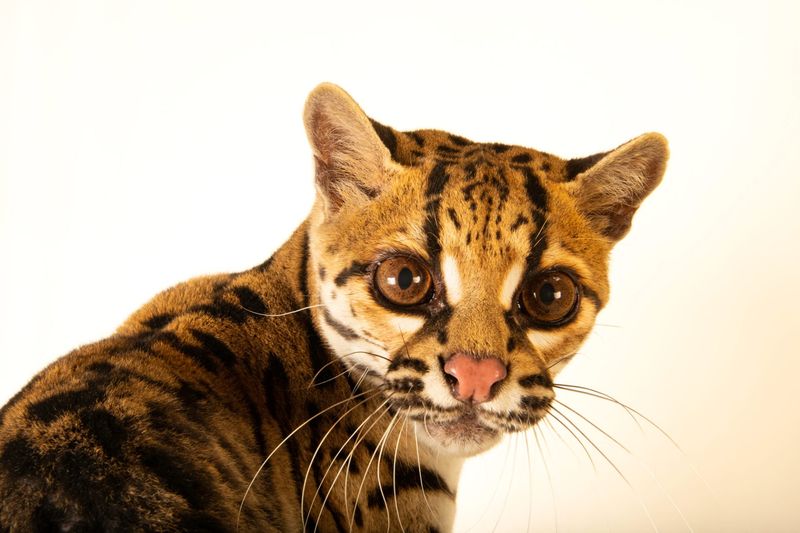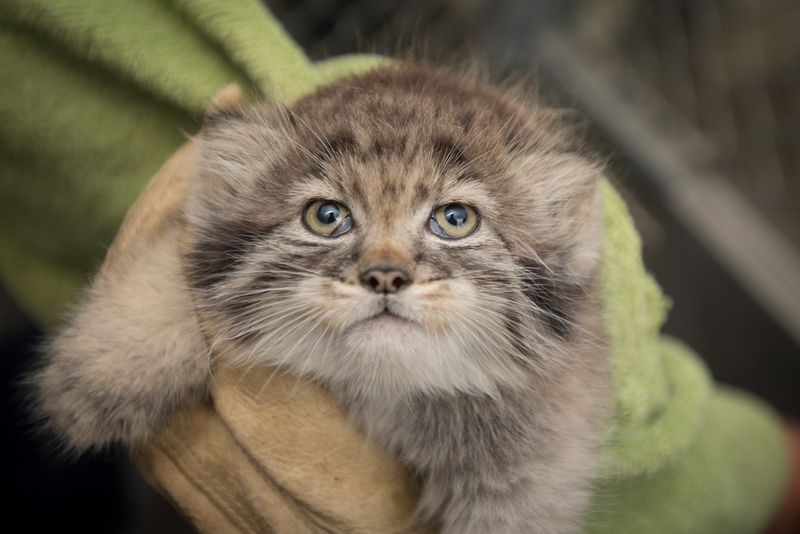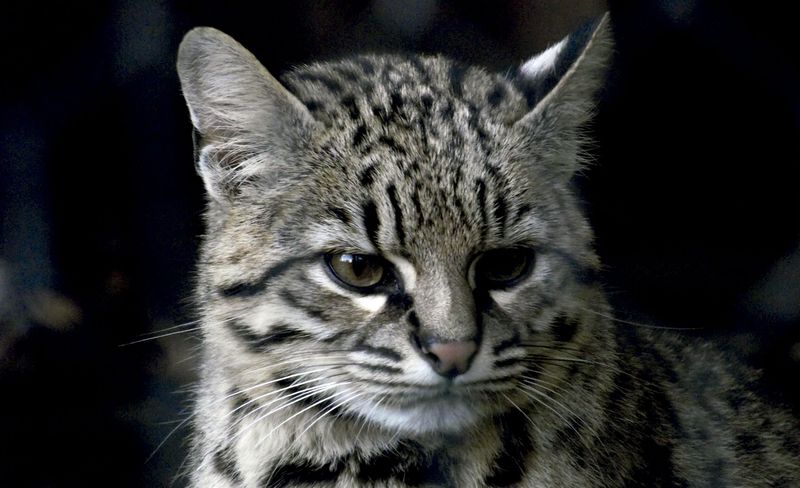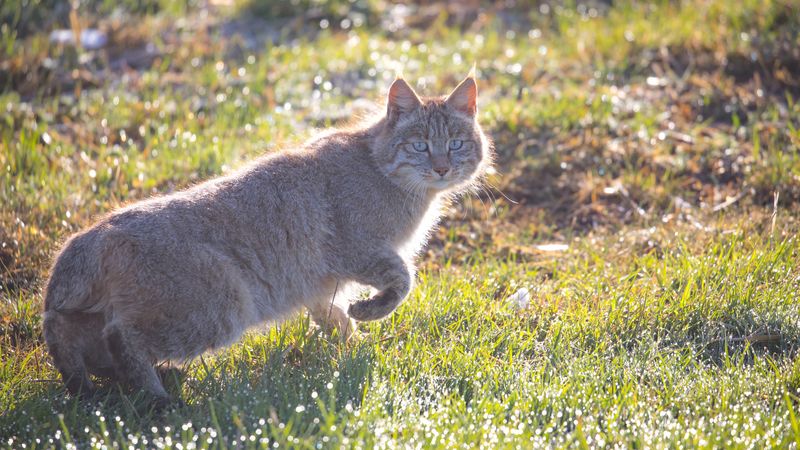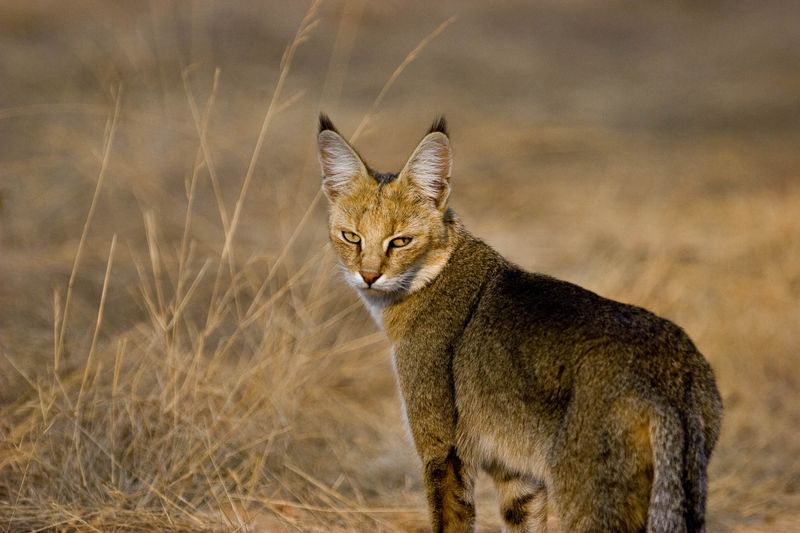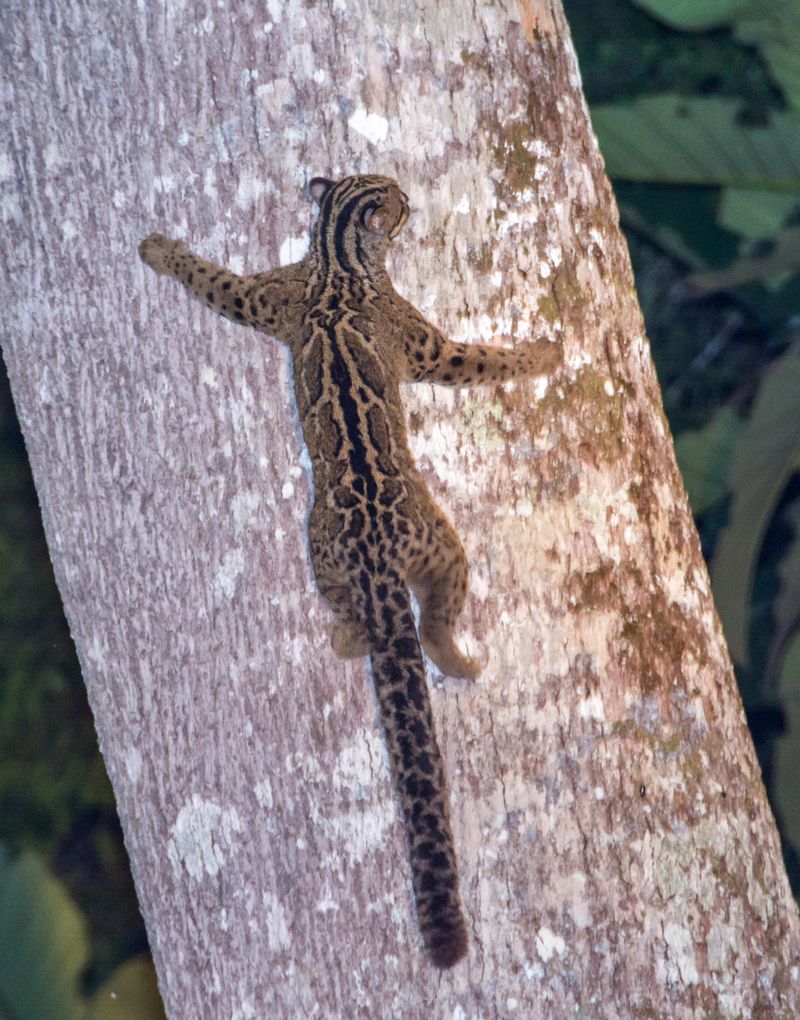📖 Table of Content:
- 1. Rusty-Spotted Cat (Prionailurus rubiginosus)
- 2. Black-Footed Cat (Felis nigripes)
- 3. Kodkod (Leopardus guigna)
- 4. Flat-Headed Cat (Prionailurus planiceps)
- 5. Oncilla (Leopardus tigrinus)
- 6. Margay (Leopardus wiedii)
- 7. Andean Mountain Cat (Leopardus jacobita)
- 8. Pallas’s Cat (Otocolobus manul)
- 9. Pampas Cat (Leopardus colocola)
- 10. Iriomote Cat (Prionailurus bengalensis iriomotensis)
- 11. Sunda Leopard Cat (Prionailurus javanensis)
- 12. Geoffroy’s Cat (Leopardus geoffroyi)
- 13. Chinese Mountain Cat (Felis bieti)
- 14. Jungle Cat (Felis chaus)
- 15. Marbled Cat (Pardofelis marmorata)
Dive into the captivating world of tiny wild cats, where some species are even smaller than the average house cat. Despite their small size, these felines are skilled hunters, thriving in diverse environments ranging from dense jungles to arid deserts. Each of these 15 species possesses unique adaptations that allow them to survive in the wild, proving that size doesn’t define strength or agility.
From the elusive Rusty-Spotted Cat of India to the tree-dwelling Margay of South America, these miniature predators are found across the globe. Some are expert climbers, while others rely on stealth and camouflage to avoid larger predators. Their behaviors and hunting techniques highlight nature’s ingenuity, making them some of the most fascinating felines in the animal kingdom.
These wild cats may be small, but their mysterious and elusive nature makes them a wonder to study. Many of these species are rarely seen, with some even classified as endangered due to habitat loss and human encroachment. By exploring their unique characteristics, we gain a greater appreciation for the incredible diversity of wild cats and the importance of protecting these remarkable creatures.
1. Rusty-Spotted Cat (Prionailurus rubiginosus)
Weighing just 2-3.5 lbs, the Rusty-Spotted Cat is amongst the tiniest wild cats on Earth. Found primarily in India and Sri Lanka, its small size doesn’t hinder its survival skills. Boasting a body length of just 14-19 inches, this feline is often spotted in the forests and grasslands, where it hunts small prey. Despite its size, it’s an agile and adept hunter. If you’re ever trekking through its native land, keep an eye out for this elusive creature, although its camouflaging coat might make spotting it a challenge.
2. Black-Footed Cat (Felis nigripes)
The Black-Footed Cat, native to Africa, is a tiny yet formidable predator. Weighing between 2-5.4 lbs, it holds the reputation for being one of the most efficient hunters. This nocturnal feline often roams the savannah, preying on insects and small mammals. Its black paws are a signature feature, aiding its stealthy night-time exploits. Fiercely independent and solitary, the Black-Footed Cat is an expert at surviving in harsh environments, a testament to its evolutionary prowess. Observers often marvel at its hunting efficiency.
3. Kodkod (Leopardus guigna)
Primarily found in Chile and Argentina, the Kodkod is the smallest wild cat in the Americas. With a weight range of 3-6 lbs, it navigates its forest home with agility. Its distinctive big, round eyes are adapted for nocturnal hunting, allowing it to spot prey easily in dim light. Its compact body is perfect for maneuvering through dense underbrush. Despite its minute size, the Kodkod is a fierce predator, often hunting birds and small mammals. It’s a true wonder of the South American wilderness.
4. Flat-Headed Cat (Prionailurus planiceps)
One of Southeast Asia’s most elusive felines, the Flat-Headed Cat is a rare, semi-aquatic species with unique adaptations for life near water. Weighing between 3.3 and 5.5 pounds, it stands out with its distinctively flattened head and elongated features. These physical traits enhance its ability to navigate wetland environments, where it thrives as an efficient hunter. Unlike most cats, the Flat-Headed Cat has a specialized diet that includes fish, frogs, and other aquatic prey. Its webbed feet give it a remarkable advantage in swimming, allowing it to glide through water with ease. This extraordinary hunting ability makes it one of the few feline species that actively relies on aquatic resources for survival.
5. Oncilla (Leopardus tigrinus)
Known as the “tigrillo,” the Oncilla is a small, spotted wild cat found in Central and South America. It weighs between 3.5-6.5 lbs and is known for its beautiful, leopard-like spots. This cat is a master of the forest canopy, often seen navigating trees with ease as it hunts birds and other small animals. Its sharp claws and agile movements make it a formidable predator in its environment. Despite its beauty, the Oncilla is vulnerable due to habitat loss, underscoring the need for conservation efforts.
6. Margay (Leopardus wiedii)
Weighing between 5.5-9 lbs, the Margay is a master climber, native to the rainforests of South America. Its ability to rotate its ankles 180 degrees allows it to navigate trees effortlessly. This arboreal feline hunts primarily at night, preying on birds, eggs, and small mammals, utilizing its climbing prowess to access hard-to-reach places. Its distinctive spots and long tail help it balance and blend into its surroundings, making it a remarkable sight for those lucky enough to spot it in the wild.
7. Andean Mountain Cat (Leopardus jacobita)
Hidden among the high-altitude landscapes of the Andes, the Andean Mountain Cat is one of the world’s rarest wild felines. Weighing between 6 and 13 pounds, this elusive predator is so rarely seen that even researchers struggle to document it. Its mysterious presence in the rugged, isolated terrain only adds to its intrigue. Built for survival in harsh conditions, the Andean Mountain Cat boasts thick fur and a bushy tail that help it withstand the freezing temperatures of its rocky habitat. Its dense coat provides insulation, while its agile build allows it to navigate the steep, unforgiving slopes with ease. As a highly specialized hunter, it primarily preys on mountain rodents and birds, blending seamlessly into its surroundings.
8. Pallas’s Cat (Otocolobus manul)
Famed for its dense fur and distinctive facial expressions, the Pallas’s Cat resides in Central Asia. Weighing 5-10 lbs, it has the densest fur of any wild cat, ideal for its cold, harsh habitat. This solitary feline is well-adapted to its environment, able to endure extremes of temperature. Its unique appearance often leads to it being dubbed the “grumpiest cat,” although its demeanor is simply a result of its facial structure. Spotting one in the wild is a rare experience, often cherished by wildlife enthusiasts.
9. Pampas Cat (Leopardus colocola)
The Pampas Cat roams the diverse landscapes of South America, from open grasslands to dense forests. Weighing between 5-9 lbs, it is known for its thick fur, which protects it from cold. This cat has a varied diet, adapting its hunting techniques to the available prey, from rodents to birds. Its stocky build aids in stealthy movements, a key to its success in diverse habitats. Preserving its environment is essential, as the Pampas Cat’s adaptability makes it a vital part of the ecosystem.
10. Iriomote Cat (Prionailurus bengalensis iriomotensis)
Native to Japan’s remote Iriomote Island, the Iriomote Cat is a critically endangered subspecies found nowhere else in the world. Weighing between 6.5 and 10 pounds, this rare feline is seldom seen, as it thrives in the dense forests and rugged terrain of its shrinking habitat. Its population remains critically low, making each sighting an extraordinary event. Adapted perfectly to island life, the Iriomote Cat is a stealthy and versatile hunter, preying on birds, reptiles, and small mammals. Its elusive nature and ability to navigate the dense subtropical forests make it a fascinating yet mysterious species. As a unique part of Japan’s natural heritage, it holds cultural and ecological significance, symbolizing the delicate balance of the island’s ecosystem.
11. Sunda Leopard Cat (Prionailurus javanensis)
Found across Southeast Asia, the Sunda Leopard Cat is a highly adaptable wild feline capable of thriving in diverse environments. From dense tropical forests to agricultural landscapes, this small yet resilient predator has learned to coexist alongside human settlements. Weighing between 3 and 7 pounds, it remains one of the most versatile and resourceful wild cats in the region. Its ability to navigate both natural and human-altered environments makes the Sunda Leopard Cat an important predator in pest control. By preying on rodents and other small animals, it helps maintain ecological balance, especially in areas near farmlands. Its spotted coat provides exceptional camouflage, allowing it to blend seamlessly into its surroundings, whether in dense vegetation or open fields.
12. Geoffroy’s Cat (Leopardus geoffroyi)
A stealthy hunter, Geoffroy’s Cat is found throughout South America, often mistaken for a domestic cat. Weighing 4-9 lbs, its small size belies its hunting prowess. This cat thrives in a variety of habitats, from woodlands to wetlands, showcasing its adaptability. Known for its solitary nature, it efficiently hunts birds and small mammals. Preserving its diverse habitat is crucial for maintaining its population, as expansion and development pose significant threats to its survival.
13. Chinese Mountain Cat (Felis bieti)
Residing in the rugged Tibetan Plateau, the Chinese Mountain Cat is one of the most elusive felines in the world. Weighing between 6 and 9 pounds, it is rarely seen in the wild, making it a mysterious and little-studied species. Its thick fur and bushy tail provide insulation against the harsh, freezing temperatures of its high-altitude habitat. Due to its remote environment and secretive nature, this wild cat remains largely hidden from human observation. It is a skilled rodent hunter, preying on pikas, voles, and other small mammals to sustain itself in the vast, open landscapes. Its well-camouflaged coat allows it to blend seamlessly into the rocky terrain, further adding to its enigmatic presence.
14. Jungle Cat (Felis chaus)
Jungle Cats vary in size, with some individuals smaller than domestic cats, especially in certain regions. Weighing 4-16 lbs, these smaller cats inhabit wetlands and grasslands. Their adaptability allows them to thrive in diverse environments, preying on small mammals, birds, and even fish. Their keen senses and agility make them effective hunters. Conserving their diverse habitats ensures the survival of these remarkable felines, as they face challenges from habitat destruction and human activities.
15. Marbled Cat (Pardofelis marmorata)
With its stunning marbled coat and graceful agility, the Marbled Cat is often compared to a miniature clouded leopard. Native to the rainforests of Southeast Asia, this elusive feline weighs between 4 and 11 pounds, making it one of the smaller wild cat species. Its unique coat pattern not only adds to its beauty but also serves as effective camouflage in its dense jungle habitat. An expert in arboreal hunting, the Marbled Cat spends much of its time navigating the treetops with remarkable ease. Its long tail and flexible body allow it to move effortlessly through the canopy, where it preys on birds, squirrels, and other small animals. This elusive nature makes sightings of the Marbled Cat incredibly rare, adding to its mystique.
